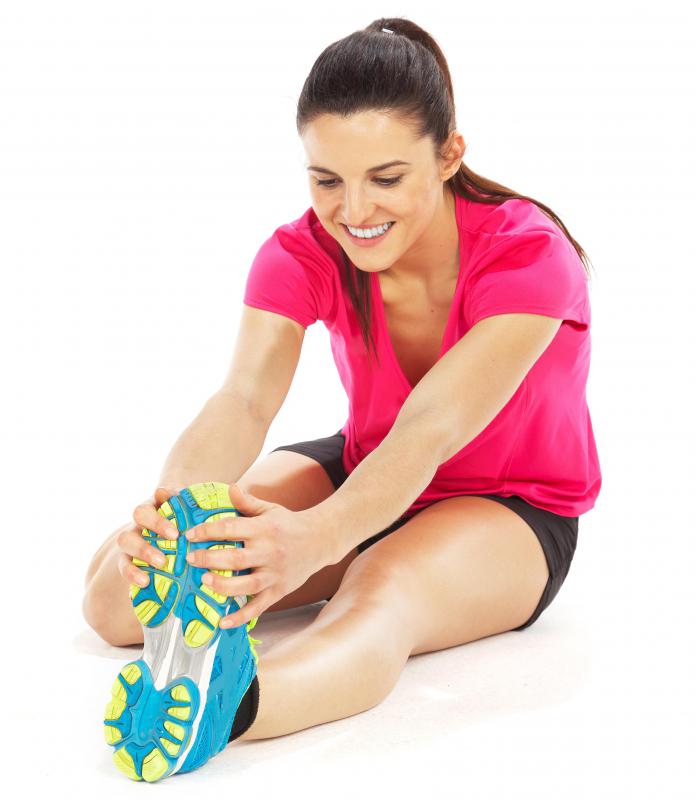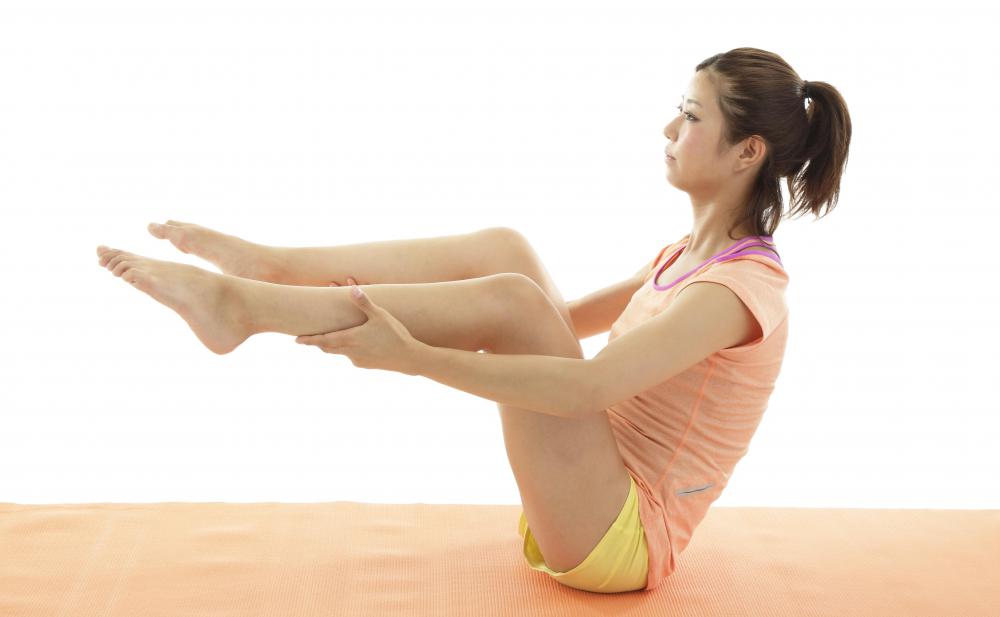At TheHealthBoard, we're committed to delivering accurate, trustworthy information. Our expert-authored content is rigorously fact-checked and sourced from credible authorities. Discover how we uphold the highest standards in providing you with reliable knowledge.
What is Ballistic Stretching?
Ballistic stretching a type of warm-up or workout routine that involves quick, jerking motions. An individual engaging in a ballistic stretch will suddenly bounce a leg or arm beyond its normal range of motion in an attempt to stretch the muscles involved. It is intended to quickly loosen muscles and increase flexibility, though many experts caution that the high intensity of this type of stretching can cause serious injuries. Most doctors, personal trainers, and anatomy experts discourage this type of stretching, preferring either dynamic or static stretching techniques instead to produce safe, effective results.
A ballistic stretch can potentially be used on a number of muscles and joints, including the shoulders, knees, hips, and ankles. A person could, for example, stand upright and repeatedly raise his or her knee quickly, bouncing it past its comfortable range of motion. While this type of exercise is designed to loosen the hamstring and quadriceps, all it really does is put excess strain on these muscles, the hip, and the knee joint. A muscle or ligament could easily tear or strain from a sudden jerk beyond normal movement. Irreversible tissue or nerve damage in joints is also possible from this kind of stretching.

Ballistic stretching is somewhat popular among athletes, who often see such stretches as a quick warm-up for physically intensive activities. In fact, personal trainers sometimes aid in ballistic stretching. An athlete might lie on the ground on her back, while a trainer lifts one of her legs and pushes it towards her body. When the muscles stop the leg from moving any further, the trainer forces it forward in a bouncing movement one or more times.

Sports science experts, trainers, and doctors usually recommend alternatives to ballistic stretching, including low-impact static and dynamic exercises. Static stretching involves gradually moving into a stretched position until a joint reaches its maximum comfortable range of motion, and then holding that position for an extended time. A trainer or partner can also help a person hold a static stretching position. Dynamic stretching involves more movement, such as raising or swinging an arm in a circle, but it is done slowly and steadily to approach the maximum range of motion.

Both static and dynamic stretches work to increase muscle flexibility and strength over time through repetition. Such exercises allow athletes and health enthusiasts to increase their abilities without risking injury. Knowledgeable athletes and their trainers understand that the intensity of ballistic stretching can certainly do more harm than good to a person's body.
AS FEATURED ON:
AS FEATURED ON:

















Discussion Comments
@SailorJerry - I totally agree. An aunt of mine had to have knee surgery that she attributes to having been made to do bouncing toe touches (with her knees locked) when she was in school.
My favorite flexibility exercise is yoga. You build strength at the same time and use your body weight to stretch and tone your whole body. It really forces you to develop control and awareness. If you aren't comfortable with the meditation/spiritual aspect, you can find many classes that are focused on the physical (though they may end in a five- or ten-minute optional relaxation).
I would encourage absolutely everyone who works out to fit in a yoga session once a week. You won't regret it!
Ballistic stretches are considered dangerous because they take a muscle further than it will naturally allow itself to go. You can get pretty seriously injured--rip the muscle right off the bone, even.
Pro athletes might sometimes do them in controlled conditions, but I'm not convinced it's a good idea even for them. For a regular person trying to stay fit, they are an absolute no-no. If a personal trainer suggests them to you, refuse and find someone else. Most people don't need to risk injury to build flexibility.
Post your comments